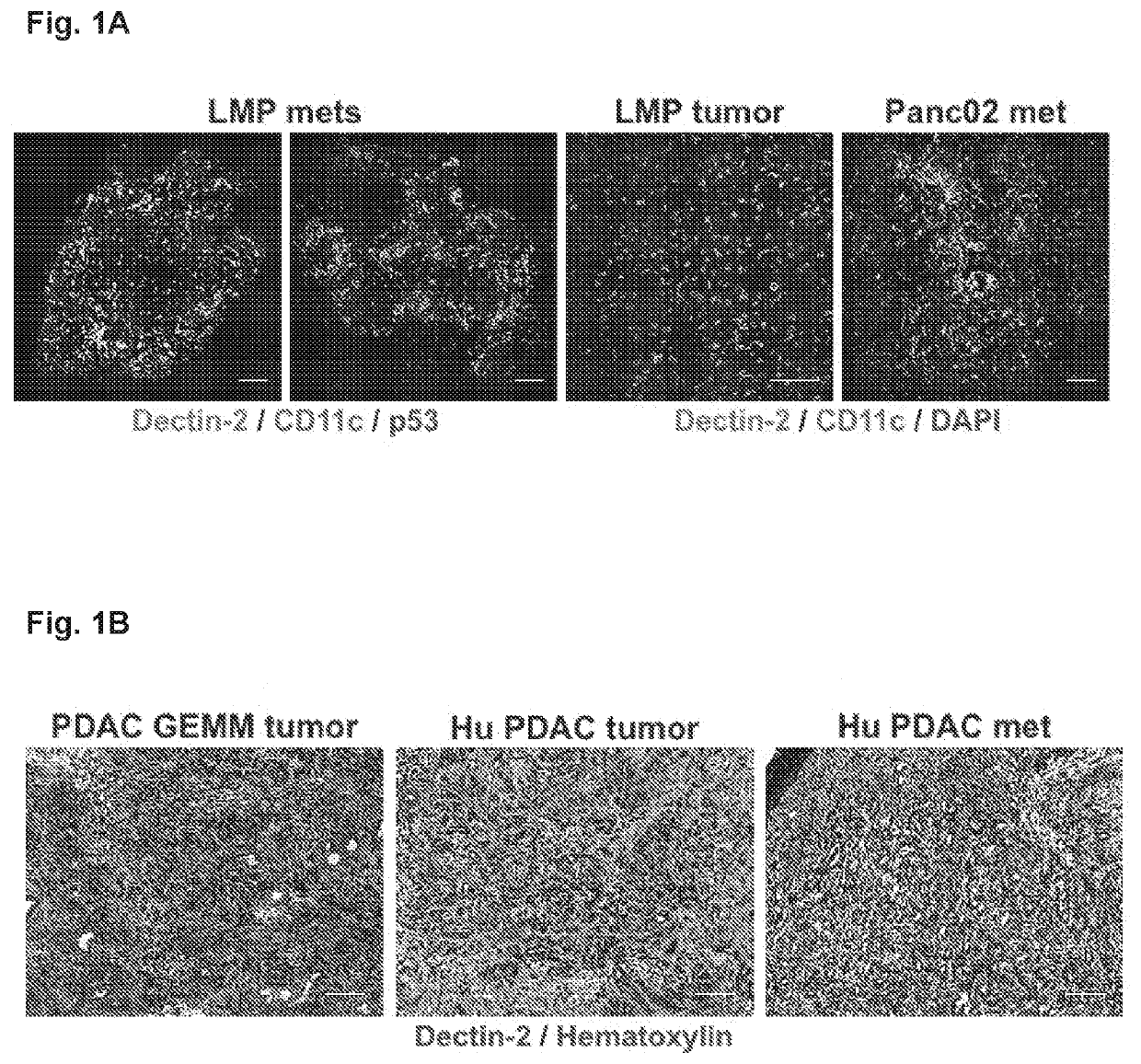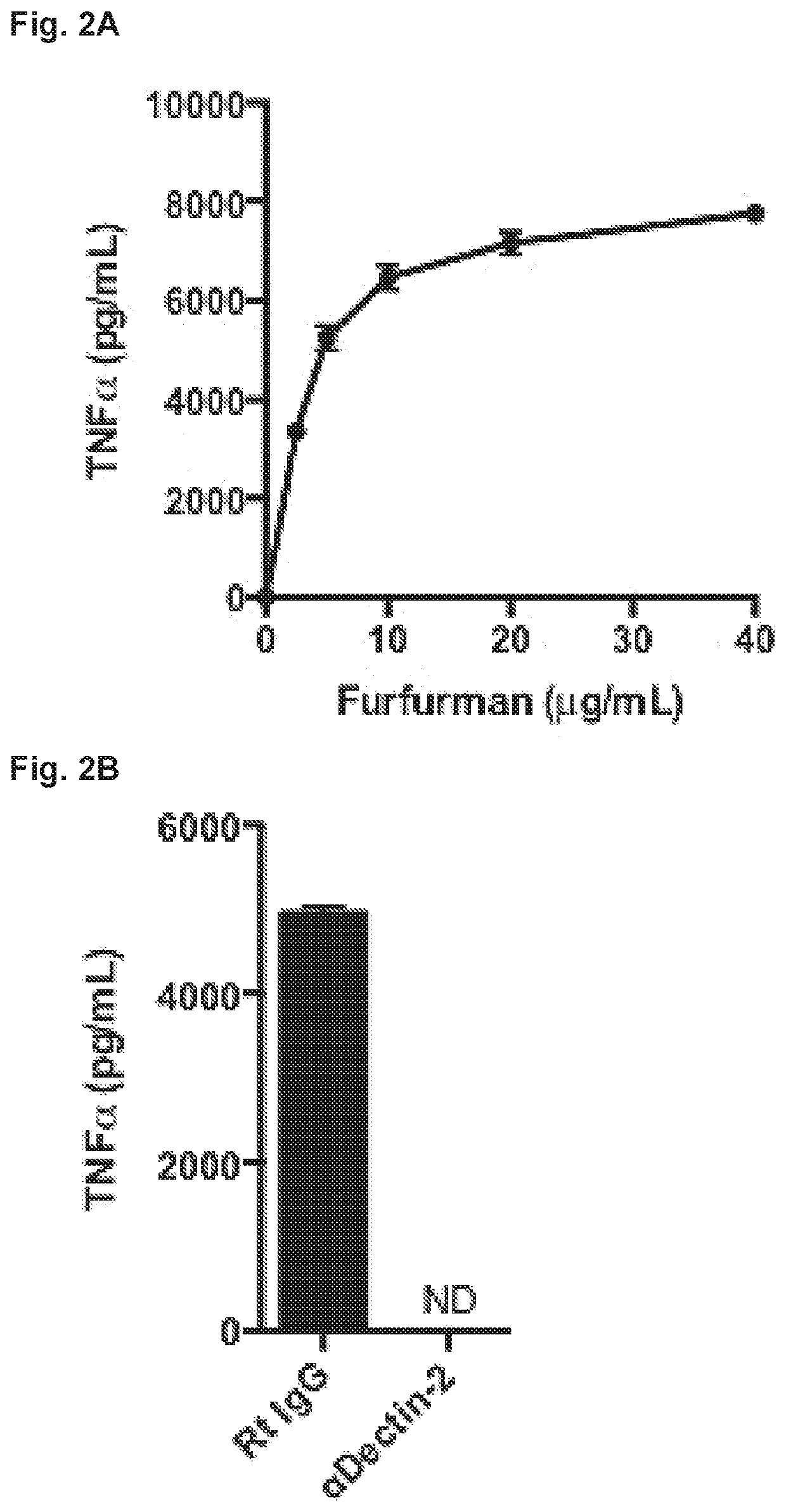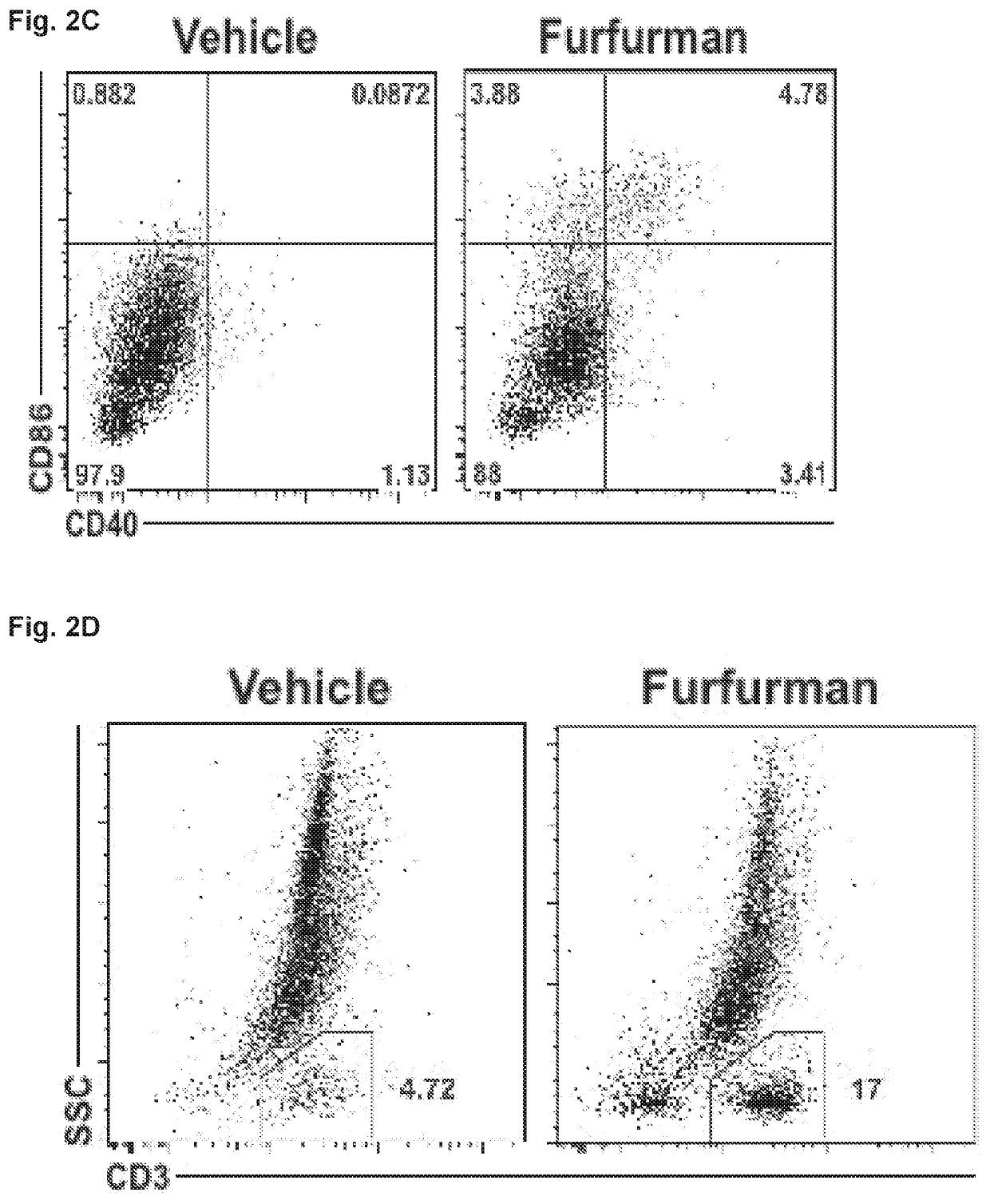Methods and Compositions for Dectin-2 Stimulation and Cancer Immunotherapy
a technology of immunotherapy and dectin-2, which is applied in the field of methods and compositions for dectin-2 stimulation and cancer immunotherapy, can solve problems such as the death of hosts, and achieve the effect of enhancing dectin-2 signaling
- Summary
- Abstract
- Description
- Claims
- Application Information
AI Technical Summary
Benefits of technology
Problems solved by technology
Method used
Image
Examples
example 1
Expression
[0427]Tumor-associated myeloid (TAM) cells (tumor associated macrophages and dendritic cells (DC)) expressed high levels of Dectin-2 (FIG. 1A, FIG. 1B), a pattern recognition receptor (PRR) required for the induction of effective adaptive immune responses in various infectious diseases. This C-type lectin receptor, a class of carbohydrate binding proteins, has been shown to recognize a diverse range of components containing multiple terminal mannose residues from fungi and other pathogens. Consistent with this, Dectin-2 selectively binds high-mannose glycans in a carbohydrate array (e.g., see McGreal et al., Glycobiology. 2006 May; 16(5):422-30).
example 2
with Natural Dectin-2 Agonists
[0428]Various pathogens, including several fungal species like the opportunistic pathogen Malassezia furfur harbor Dectin-2-activating factors. In the experiments presented here (FIG. 2A-2G), a commercially available cell wall extract of M. furfur (furfurman; Invivogen) activated tumor-associated myeloid (TAM) cells in a Dectin-2-dependent fashion, which led to proinflammatory cytokine production and costimulatory molecule expression by the TAM cells (FIG. 2A-2C). Repeated i.v. injection of the Dectin-2 agonists from M. furfur and S. cerevisiae was well tolerated in mice.
[0429]Consistent with these data, the studies in murine PDAC models indicated that intratumoral injection of a natural Dectin-2 agonist induces T cell infiltration (FIG. 2D) and inhibits tumor growth (FIG. 2E). Furthermore, when combined with conventional chemotherapy (i.e. gemcitabine) or more established cancer immunotherapies (i.e. checkpoint inhibitors, CD40 agonists), Dectin-2 stim...
example 3
with Class I Alpha-Mannosidase Inhibitors
[0432]Dectin-2 recognizes various pathogen components containing multiple terminal mannose residues and reacts strongly with high-mannose type glycans. High-mannose glycans are common intermediate glycan species generated during N-linked glycosylation of proteins in eukaryotic cells. In mammalian cells, these high-mannose glycans are further processed into complex or hybrid type N-glycans—a process which requires the action of various mannosidases that cleave terminal mannose residues from the initial high-mannose precursor, Man9GlcNAc2 (Man-9).
[0433]Treating tumor cells with kifunensine (an example of a small molecule alpha-mannosidase class 1 (α-mannosidase I) inhibitor) led to a sharp increase in high-mannose glycans on the cell surface (FIG. 5A). The tumor cells subsequently activated tumor-associated myeloid cells (TAM cells) (e.g., tumor associated dendritic cells and macrophages) in a Dectin-2-dependent fashion, inducing proinflammator...
PUM
| Property | Measurement | Unit |
|---|---|---|
| concentration | aaaaa | aaaaa |
| concentration | aaaaa | aaaaa |
| dissociation constant | aaaaa | aaaaa |
Abstract
Description
Claims
Application Information
 Login to View More
Login to View More - R&D
- Intellectual Property
- Life Sciences
- Materials
- Tech Scout
- Unparalleled Data Quality
- Higher Quality Content
- 60% Fewer Hallucinations
Browse by: Latest US Patents, China's latest patents, Technical Efficacy Thesaurus, Application Domain, Technology Topic, Popular Technical Reports.
© 2025 PatSnap. All rights reserved.Legal|Privacy policy|Modern Slavery Act Transparency Statement|Sitemap|About US| Contact US: help@patsnap.com



